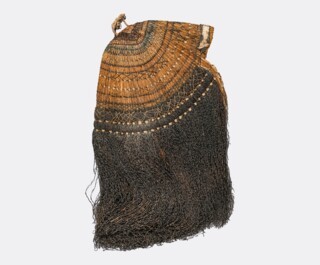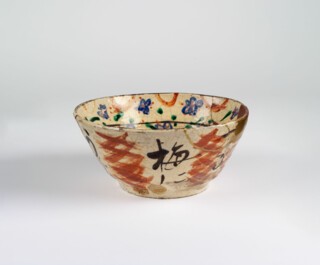Artistic influence may benefit from a degree of misunderstanding: it keeps it from lapsing into imitation. By the time William Morris launched the Arts and Crafts movement in the 1860s, it took a certain wilful ignorance to believe, as he and Ruskin did, that the builders of the Gothic cathedrals were anonymous artisans, working humbly for the glory of God. Three generations of antiquarian research had uncovered quantities of information about individual masons, many of whom worked internationally, were highly sought after and travelled with their own specialist teams. There is, as Róisín Inglesby emphasises in her thoughtful introduction to Mingei: Art without Heroes (Yale, £35), a difference between an anonymous maker and one who has been anonymised, whether, as in some of the instances she cites, by ‘political and social oppression’ or, as with Morris’s medievalism, by the condescension of posterity.
The Victorians’ attempt to compensate for the overwhelming impact of urbanisation and industrialisation required a reimagining of the past in a form that could be projected as a model for a better future. Morris’s Middle Ages were a vision of the world to come as a rural communist paradise. The result was some wonderful wallpaper. His genius was for pattern design, and he contributed more to the sum of human happiness in that capacity than as a political theorist. The inherent contradictions in his practice troubled him greatly. The revival of supposedly humble crafts in a mechanised, capitalist society left him raging ‘like a wild animal’ in fury that he was condemned to spend his life ‘ministering to the swinish luxury of the rich’. He did not live to encounter the opposite problem, that an era of mass production has spread his designs like a rash over tea towels and biscuit tins, smothering their brilliance in cliché.
Unlike the Arts and Crafts movement, which became part of art history, the theory and practice of Mingei is seen in Japan as a continuing philosophy, though it owes much of its initial inspiration to Morris. By the time he died in 1896 his economic theories were known there in socialist circles: his ideas about art came later but had more impact. In a society that industrialised slowly, long after most of Europe, and where feudalism was formally abolished only in 1871, the Middle Ages felt much closer than they did in Britain. Mingei was rooted in surviving traditions and it continues to develop, as do critical attitudes to its founders and their sources. In 1991 the landmark exhibition Mingei: The Living Tradition in Japanese Arts was shown in Glasgow, Sunderland and London as part of the Japan Festival. It presented a selection of exquisite objects loaned by the Mingeikan, the Japan Folk Crafts Museum. Spanning two centuries, it juxtaposed traditional craft work by unknown makers with pieces by the founders of Mingei – the potters Soetsu Yanagi and Shoji Hamada – and others, with relatively slight commentary. This almost purely aesthetic approach has given way to a more critical evaluation of Mingei’s own complicated history and its selective use of the anonymous dead.
Visitors to the small but enjoyably argumentative exhibition at the William Morris Gallery (until 22 September) might bear some of this background in mind to help make sense of a somewhat disjointed display which works best as an illustration of the accompanying book. It includes the expected and exquisite in the form of kimonos hung on rods that lend a hieratic quality even to a 19th-century patchwork yogi, or sleeping coverlet, made from scraps in half a dozen shades of blue. There are stranger things too, such as a hat worn by a ‘winter hunter’ or matagi. Made of rice straw, which being hollow provided the wearer with some insulation from the cold, it is designed to protect from heavy snow falls and would have hung down over the face. Unworn it looks like a wig, shading from gold at the crown to black; in use it must have given the hunter a sinister appearance. A small Korean water sprinkler made of white porcelain some time in the 17th or 18th century sits self-possessed among the heftier stoneware. Inevitable, and modest, with a tiny hole at the top for filling and a correspondingly tiny beak of a lip for pouring, it would sit perfectly in the hand, and embodies the ideals of Mingei. It comes from the collection of the British potter Bernard Leach, who lived for periods in Japan and was one the founders of the movement. There is a small etching by him of a farmhouse scene in the home village of his friend Tomimoto Kenkichi, a designer and potter who spent time in England and, in an article published in 1912 in the art magazine Bijutsu Shinpō, introduced the Arts and Crafts movement to a Japanese readership. The feature was illustrated not only with objects but with interior views of Morris’s homes, the Red House and Kelmscott Manor.
Mingei absorbed the philosophy and domestic ideal, as well as the production values, of Morris & Co and it encountered many of the same difficulties. A shortening of minshūteki kōgei or ‘art for the people’, it may not have wanted heroes, but it acquired them in a number of strong and sometimes conflicting personalities. There are several versions of the Mingei origin story of which the most attractive is the one told by Yanagi, who emerged as the pre-eminent figure. In his account it began one January night on the slopes of Mount Koya, where he and a group of friends discussed their love of the ‘incomparable beauty’ of utilitarian objects. From this came the Mingei manifesto, ‘Prospectus for the Establishment of a Mingei Art Museum’, which led to the foundation of the Mingeikan in 1936.
Threads of Eastern and Western influence continued to cross until the Second World War. European modernists, including Bruno Taut and Charlotte Perriand, travelled in rural Japan with Yanagi seeking out folk art and architecture in which they detected their own Corbusian ideal of form deriving purely from function. The centre of interest was the Tōhoku region: remote, mountainous and largely untouched by modernisation. Yanagi made more than twenty trips there between 1927 and 1944, looking for work to include in the exhibitions he curated to promote his conception of Mingei. Like Morris, he had to come to terms with the economics of his own time and it was not on the mountain top but in the department stores of Tokyo that the public first saw the fruits of his vision. Yanagi’s theories were based on a combination of William Blake, Zen and the Chinese philosophy of Lao Tzu, who reasoned that in the best of all possible worlds there would be no need for individual artists because beauty would be inherent in every artefact. While Morris looked to the Middle Ages for his nameless makers, the Japanese turned to the rural artisans of Tōhoku and, further afield, the products of their empire in the ceramic traditions of Korea and the textiles of the Indigenous people of Okinawa.
To bend them to the philosophy of Mingei required a degree of wishful thinking and selective looking. The resist-dyed bingata textiles of Okinawa, represented in the exhibition by a cotton robe, patterned with astonishing delicacy using traditional stencil and paste-resistant dyeing, were to the Mingei pioneers the epitome of those humble objects they were looking for, ‘faithful to the dictates of material and method’ and democratically ‘available to all’. In fact, bingata was made to order in tiny quantities and had been the prerogative of royalty until the late 19th century.
Korea, formerly Joseon, was ruled by the Japanese from 1910 to 1945. The main threat to its Indigenous crafts was from its imperial occupiers, who tried to eradicate the native culture. Yanagi, who spoke of the Korean aesthetic as ‘the beauty of sorrow’, seems to have lamented the loss in much the same spirit that Morris lamented the death of Gothic craftsmanship three centuries earlier, in a spirit of helplessness tinged with sentimentality. He had none of Morris’s political radicalism. The exhibition takes the Mingei movement in general and Yanagi in particular to task over this, juxtaposing works by named and unnamed Korean makers. Dasom Sung, a curator of Korean ceramics at the V&A who writes even-handedly about Yanagi’s complicity in the Japanese occupation, rescues, if not from anonymity then from a degree of obscurity, the Noritaka brothers, who introduced him to Korean craft.
Neither book nor exhibition has much to say about the war years, and in the postwar period there was a remarkably quick resumption of East-West relations in the Mingei network. At the International Conference of Craftsmen in Pottery and Textiles, held at Dartington Hall in Devon in 1952, Yanagi, Hamada and Leach emerged as the leading evangelists for the movement. They went on to tour the United States for five months, seeding craft foundations in Santa Fe, Minnesota and later Canada and New Zealand. In Japan the Mingei ideal continued to fluctuate with the rise and fall of the Japanese economy and has revived somewhat since the aftermath of the 2011 earthquake. It has descended at times into tourist trinketry and become part of the culture of Kawaii or ‘cuteness’, recently the subject of its own major exhibition at the V&A.
This show ends on one of the more compelling contradictions that have characterised the history of Mingei, with the suggestion that its ideals are now best embodied in the moderately priced products of the Muji chain, founded in 1980. The name is a contraction of characters meaning ‘no brand-quality goods’. Muji’s art director, Hara Kenya, has argued that its aesthetic, which he defines as a process of editing, derives from Shinto tradition in which the centre of the shrine is empty, a space left for the kami, or deity. An aesthetic philosophy based on a divine absence avoids the complications implicit in wilfully anonymising human beings. Muji represents a reversal of means and ends as espoused by Morris and the founders of Mingei: there is no handicraft in its manufactured, mass-produced products. Yet the results work with the grain of the society that creates them and might seem to have more in common with the self-effacing little water dropper than with the assertive studio ceramics of Leach and Yanagi.
Send Letters To:
The Editor
London Review of Books,
28 Little Russell Street
London, WC1A 2HN
letters@lrb.co.uk
Please include name, address, and a telephone number.





